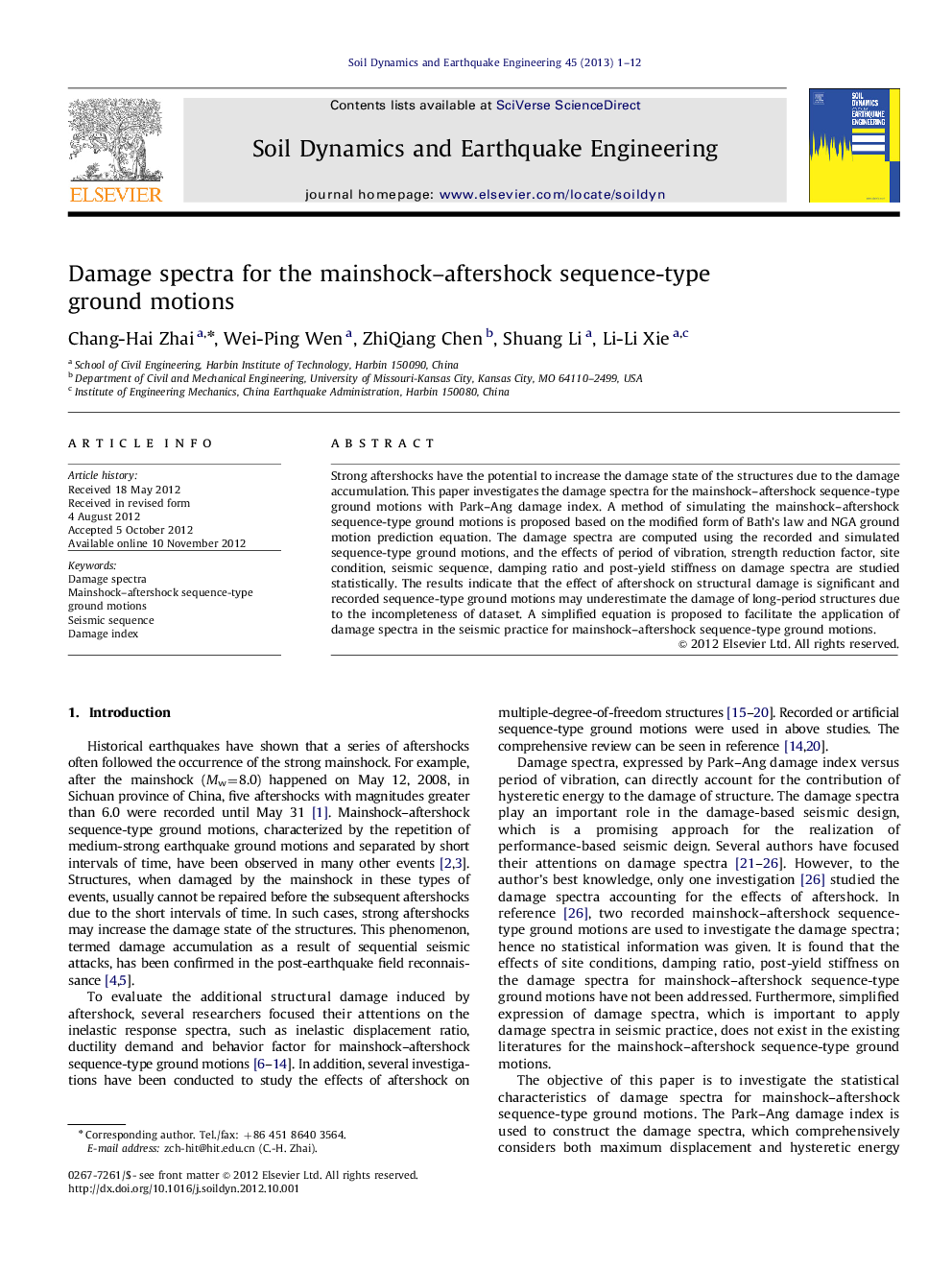| Article ID | Journal | Published Year | Pages | File Type |
|---|---|---|---|---|
| 304352 | Soil Dynamics and Earthquake Engineering | 2013 | 12 Pages |
Strong aftershocks have the potential to increase the damage state of the structures due to the damage accumulation. This paper investigates the damage spectra for the mainshock–aftershock sequence-type ground motions with Park–Ang damage index. A method of simulating the mainshock–aftershock sequence-type ground motions is proposed based on the modified form of Bath's law and NGA ground motion prediction equation. The damage spectra are computed using the recorded and simulated sequence-type ground motions, and the effects of period of vibration, strength reduction factor, site condition, seismic sequence, damping ratio and post-yield stiffness on damage spectra are studied statistically. The results indicate that the effect of aftershock on structural damage is significant and recorded sequence-type ground motions may underestimate the damage of long-period structures due to the incompleteness of dataset. A simplified equation is proposed to facilitate the application of damage spectra in the seismic practice for mainshock–aftershock sequence-type ground motions.
► A method of simulating the sequence-type ground motions is proposed. ► Damage spectra are studied statistically using recorded and simulated ground motions. ► It is found that the effect of aftershock on structural damage is very significant. ► A simplified expression is suggested to facilitate the application of damage spectra.
